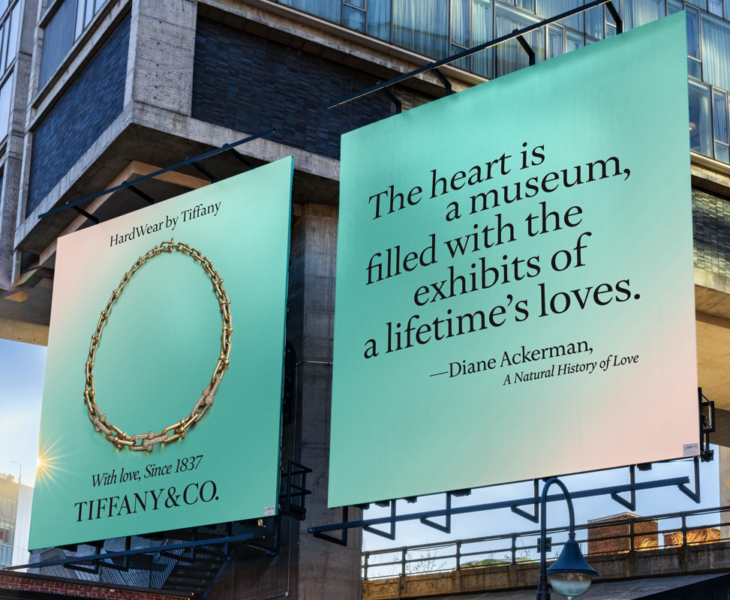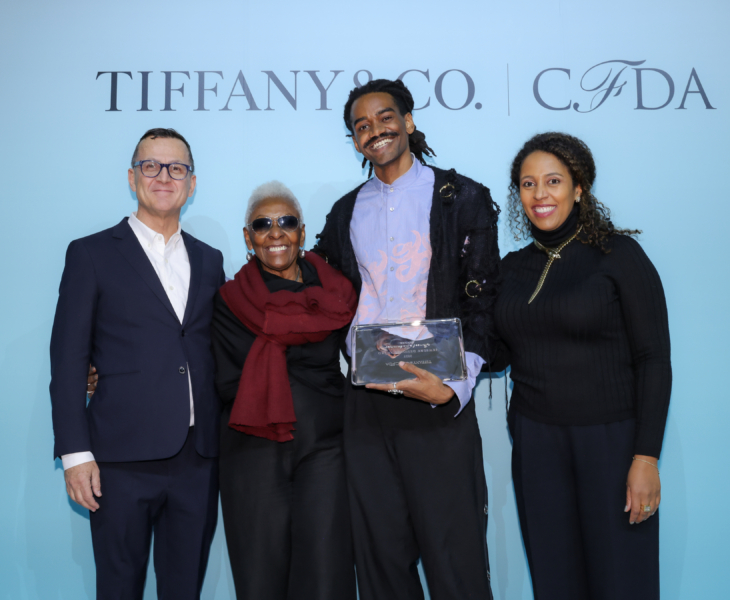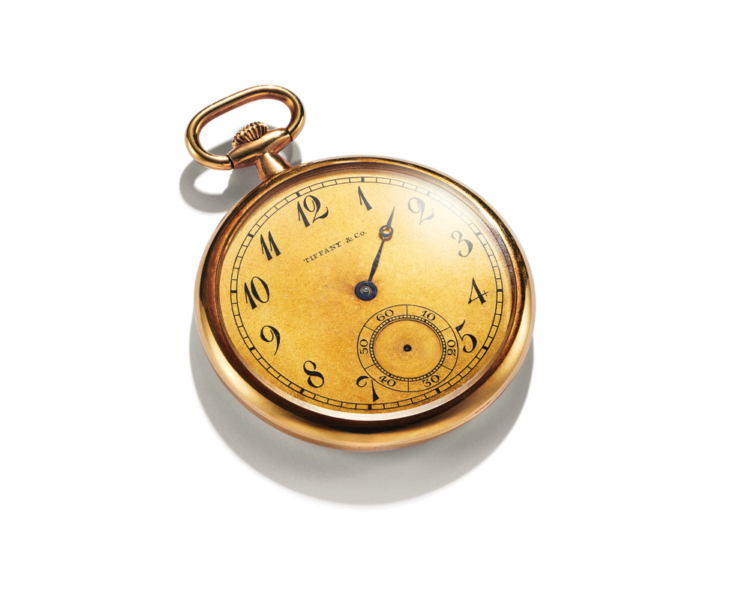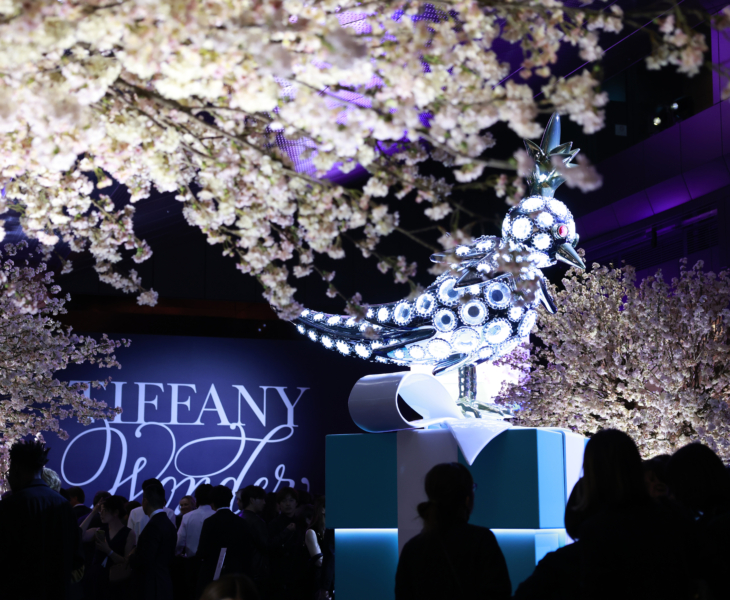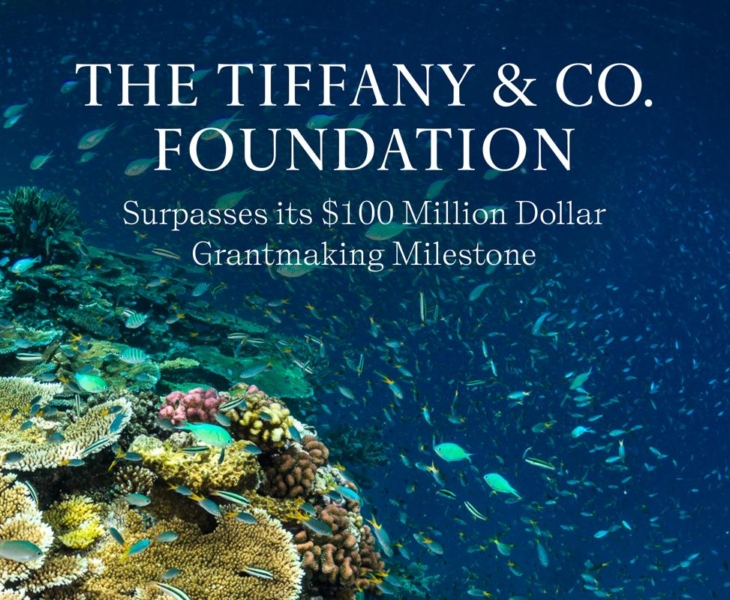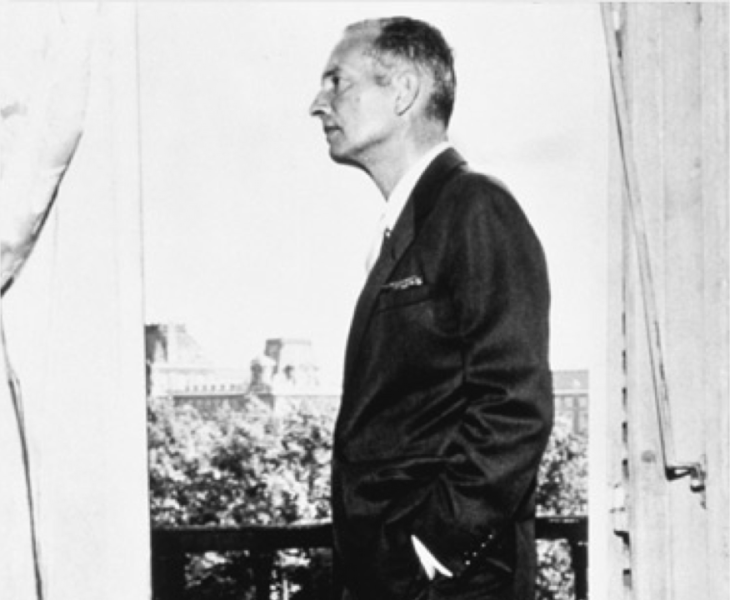
One of the 20th century’s most gifted artists, Jean Schlumberger (1907–1987) created objects of unparalleled beauty. He was a man of refined taste—an artist who conceived spectacular jeweled statements with an incredible sense of dimension and life. Schlumberger was uninhibited in his conceptualizations of flora and fauna, at once representing and creating a unique fusion of natural forms to create his distinctive designs. His innovative and imaginative designs are inspired by everything from deep-water shells and exotic plants to fantastical birds. Endless hybrids evolve from animals, vegetables and minerals; a starfish becomes a star and a flower a sun—a bird’s plumage transforms into an angel’s wing. Deeply imaginative, Schlumberger’s magnificent creations are enduring icons that reflect both the artist’s ingenuity and the technical virtuosity of Tiffany’s expert craftsmanship.
“I try to make everything look as if it were growing, uneven, organic,” he once said. “I want to capture the irregularity of the universe.”
Born in 1907 into a prominent family of textile manufacturers in Alsace, France, Schlumberger demonstrated a talent for drawing from a young age. Despite his constant sketching, his parents, dissuading him from pursuing the arts, sent him to Berlin in the 1930s to seek a career as a banker—but Schlumberger had other plans for himself.
In his early 20s, Schlumberger moved to Paris where he could hone his creative impulses and love for the arts. He got a job working for French couturier, Lucien Lelong, then subsequently worked at a Parisian art publishing house. He reveled in Paris’ vibrant and eccentric zeitgeist, drawn to the originality and novelty that saturated 1930s Parisian culture. A lover of antiques and without the financial means to acquire materials, Schlumberger would stroll through the Marche des Puces, the Paris flea market, looking for relics of Victoriana like serpents and cherubs or colored glass objects. One day, Schlumberger found Meissen porcelain flowers adorning an old chandelier he came across and turned them into elegant clips for his sophisticated friend circle. Schlumberger’s porcelain clips were an instant hit.
Creating new jewelry designs inspired by his discoveries, word of Schlumberger’s talents spread fast. Receiving sufficient requests for his designs to enable him to quit his regular job, he began to focus exclusively on jewelry. Opening an atelier on rue de la Boetie, Jean Schlumberger quickly became the sought-after purveyor of exceptional jewelry for the Parisian elite. In 1937, fashion designer Elsa Schiaparelli, too, learned of Schlumberger’s artistic genius, impressed by his earrings she saw the Duchess of Kent wearing.
Schiaparelli, a rising fashion designer known for her stylized accessories, enlisted Schlumberger to lead design for her collections of buttons and costume jewelry. An instant success—not only in Paris, but internationally— Schlumberger’s imaginative buttons for Schiaparelli’s suits evoked reliefs of animals, shells, cherubs, fruit and insects, a lively repertoire that would reappear later in his jewelry designs. It was while designing his fantasy buttons for Schiaparelli’s suits that legendary Vogue editor, Diana Vreeland, discovered him, impressed by his creative vision.
By the end of the 1930s, Schlumberger had branched off and became a success story in his own right. He created hat pins for Madame Suzy, strappy heeled sandals for Delman—lauded on both sides of the Atlantic for his exceptional designs. After serving in the French Army during World War II, Schlumberger moved to New York. In Manhattan, he crossed paths with childhood friend, Nicolas Bongard, who was designing handmade buttons. In 1947, the pair opened a small salon together; and soon thereafter, Schlumberger’s clips of jeweled birds and sea creatures were seen on the most fashionable women.
The legendary partnership between Tiffany & Co. and Jean Schlumberger began in 1956, when Walter Hoving, then chairman of Tiffany & Co., asked Schlumberger to join the company as vice president. Schlumberger agreed, ushering an unprecedented chapter in the world of jewelry design. With vibrant rare colored gemstones and diamonds at his fingertips, Schlumberger worked out of his personal design studio and salon on the mezzanine floor of the original Tiffany & Co. Fifth Avenue flagship store. Schlumberger created some of Tiffany’s most iconic designs including the Bird on a Rock clip, his intricate paillonné enamel bangles and bold colored rings, the Cooper bracelet and the Sixteen Stone diamond ring.
When Schlumberger began his tenure at Tiffany & Co., one of his first artistic moves was to mount the famous Tiffany Diamond on a high jewelry design. Tiffany entrusted the young designer with setting the 128.54-carat Fancy Yellow diamond—the largest and finest yellow diamond in the world at the time—a bold move that solidified Schlumberger’s artistic role at Tiffany. The designer initially proposed three settings for the legendary yellow diamond: swathed in diamond ribbons as the centerpiece for a necklace, held by diamond-set wings as a clip or framed by diamond daises on a bracelet. The archival sketches of these designs are proof of his ingenuity and the level of talent that he exhibited. However, it was ultimately in 1961 that Jean Schlumberger’s iconic Ribbon Rosette necklace became the final design that Tiffany commissioned for the setting of the Tiffany Diamond.
In 1995, at the Musée des Arts Décoratifs’ Jean Schlumberger retrospective in Paris, the diamond was set in one of his most beloved creations—the Bird on a Rock clip. The Tiffany Diamond remains the most important gemstone in the world—one that honors Charles Lewis Tiffany’s vision and Jean Schlumberger’s design legacy.
All of Schlumberger’s jewelry designs were first conceived as drawings, and, most impressively, he was completely self-taught, with no formal artistic training. With smooth, ultrafine tracing paper, pen and India ink as his medium, the artist applied the gouache technique with continuous, fluid lines, giving form to his imaginative shapes and elegant motifs. Schlumberger’s sketches are also distinguished by a strong sculptural quality. Schlumberger often traveled to Bali, India and Thailand to draw. The designer imagined some of his most celebrated designs at his home on the Caribbean island of Guadeloupe, where he drew inspiration from the naturalistic themes that can be seen throughout this residence. His exotic Oiseau de Paradis clip, a mythical bird that glows with the kaleidoscopic colors of yellow beryl, amethysts, emeralds, and sapphires, is an example that reflects Schlumberger’s ability to find something in nature and inject it with an imaginative spirit. The artist’s original drawings have fortunately been preserved. In 1995, the Musée des Arts Décoratifs received a gift of over 3,000 Schlumberger drawings, vastly enriching the Drawings Department’s collection of jewelry designs.
Paillonné enamel is one of Jean Schlumberger’s signature styles. The 19th-century artform involves a labor-intensive process of layering enamel over 18k yellow gold, where translucent colored enamel is fired multiple times on fine sheets of gold foil, lending to rich hues with extraordinary depth of color. Using this time-honored technique, Schlumberger’s colorful enamel masterpieces—beautifully punctuated with gold and colored gemstones—are among the greatest jewelry designs of all time and remain iconic today.
Schlumberger is also known for his innovative use of 18k yellow gold in his designs. Often woven in a lyrical, fluid manner, Schlumberger’s iconic gold elements reimagine ropes, tassels and ribbons, capture the dynamism found in nature, as well as reflect his family’s legacy in textiles. Whether droplets of gold like rain punctuating enamel, a gold X shape resembling stitching or gold stems, leaves and buds evocative of a garden, Schlumberger’s broad use of gold is rooted in both family heritage and his affinity for the natural world.
While at Tiffany, Jean Schlumberger amassed an impressive client roster. Everyone from Hollywood film actresses to royal families and international socialites were seen wearing the designer’s extraordinary creations. Today, style arbiters, tastemakers and celebrities continue to revere his high jewelry designs—both on and off the red carpet.
In 1960, President John. F. Kennedy famously gave his wife, Jackie, an elegant Tiffany & Co. Schlumberger® Berry clip in 18k yellow gold with rubies and diamonds to celebrate the birth of their newborn son, John Kennedy, Jr. JFK walked into the Tiffany & Co. Fifth Avenue Flagship store in New York and purchased the clip in the busy months leading up to his inauguration a gesture intended to symbolize their two children, which Caroline Kennedy would eventually inherit. In 1962, JFK gifted Jackie with her first Schlumberger Croisillon bracelets. She was often photographed wearing the iconic paillonné enamel and 18k yellow gold bracelets. The Croisillon bracelets quickly became one of Schlumberger’s most desirable designs and remain just as coveted today, reflecting the timelessly modern aesthetic that he is celebrated for.
One of Schlumberger’s most iconic designs is his Dolphin clip, a whimsical display of 18k yellow gold, diamonds, sapphires and emeralds. Part of Elizabeth Taylor’s esteemed personal jewelry collection, the clip was originally a gift to Taylor from Richard Burton on the occasion of the 1964 premiere of his film, The Night of the Iguana. Taylor was photographed on numerous occasions wearing the spectacular clip.
The worlds of art and fashion have celebrated Schlumberger’s brilliant career with numerous honors and awards. He was the first jewelry designer to win the coveted Fashion Critics’ Coty Award in 1958. The French government made him a Chevalier of the National Order of Merit in 1977. A 1986 exhibition marked the designer’s 30th anniversary with Tiffany. In 1995, the Musée des Arts Décoratifs in Paris, which houses Schlumberger’s original designs, honored him with a retrospective entitled, “Un Diamant dans la Ville.” This posthumous tribute marked only the third time a jewelry designer had been so honored by the museum. The world’s largest collection of Schlumberger objects was given by Paul and Rachel “Bunny” Mellon to The Virginia Museum of Fine Arts permanent collection in the United States.
During his entire career, he would continue to mix the precious and fanciful, using antique jewelry he found at the shop of an old jeweler in rue du Temple, and buying motifs carved out of coral, shells, or cameos which he reset in precious materials in the middle of clips. Later in life, Jean Schlumberger returned to Paris, the city that awakened his artistic soul. He died in 1987, at the age of 80, leaving a legacy of bejeweled flowers, ocean life and birds of wonder.
Tiffany, Tiffany & Co. and T&CO. are trademarks of Tiffany and Company and its affiliates.

